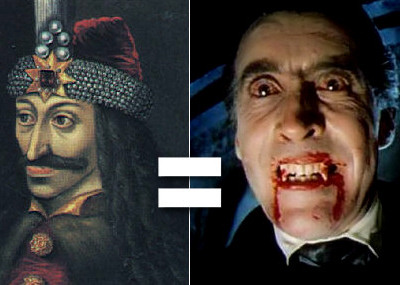Vlad Tepes: The Real Dracula

March 13, 2019
Dracula, when the name comes to mind you often think of an old pasty white man with fangs in a black and white movie. Written by Bram Stoker in 1897, Dracula has always been a best seller. However, Bram didn’t come up with the concept of Dracula entirely on his own. Dracula was inspired by a man of the same name. The real Dracula wasn’t a bloodthirsty vampire, but he was bloodthirsty, and his Bloodlust caused him to gain the name Vlad the Impaler. This morbid nickname is a testament to his favorite way of executing his prisoners, but other than the bloodthirstiness and the name, the two Dracula’s are quite different.
By most accounts, Vlad the Third was born in Transylvania in 1431. But that seems to be the only link that Vlad has with Transylvania. The castle that is known as Dracula’s castle in Transylvania was never actually owned by Dracula. In fact, he most likely never set foot there. Vlad lived most of his life in Wallachian which is now modern-day Romania. Vlad the Impaler’s father was also named Vlad and when he was young, the king of Hungary and emperor of Germany Sigismund knighted Vlad the elder. Vlad the Elder decided to take a new name. He chose the old Romanian word for Dragon: Dracul. Dracula is a given name that means son of Dracul or son of the dragon. So what did Dracula do to gain the nickname the Impaler?
When Vlad was 12 he was captured by the Ottomans with his brother. Held as hostages Vlad and his brother were taught many things including science, philosophy, and the arts. He also became skilled in horsemanship and a shrewd tactician. Compared to modern hostages, Vlad and his brother were treated very well. However, unlike his brother Vlad held an animosity to the Ottomans. This became one of his biggest reasons for eventually fighting the Turks. But Vlad’s father ended up dying to fight for his land against other nobles. Eventually, after many battles and defeats, Vlad, with the help of the Hungarians, retook his father’s lands and became Prince of Wallachia. But there is another threat on his Southern border. The Ottomans conquered Constantinople and renamed it to Istanbul and they were now set to conquer all of Europe. Consolidate his power and fear of rebellion Vlad summoned all of the nobles and other threats in his lands to a feast. When they entered the feast Vlad had them all killed and while their bodies still twitched they were impaled outside the castle.
Vlad is also accredited with defeating the Ottomans and refusing them access to Europe. Without Vlad, the Ottomans would have been able to walk straight into Europe and take it relatively easy. Vlad’s victories were celebrated all throughout Europe and even Pope Pius II commended him. Today Romanians view Vlad as a good King. Even though he was a bit harsh in his punishments, he was just and inspiring to his people.
But when I questioned students from Ipswich High School about Dracula, and the person who inspired him, I got mostly mixed responses and nowhere near as much info on Vlad himself. “I didn’t even know that Dracula was inspired by someone real,” Jeremy Powers stated. Personally, I think that this is evidence of how we, as a school and even as Americans, don’t focus or even teach as much world history than American history.



